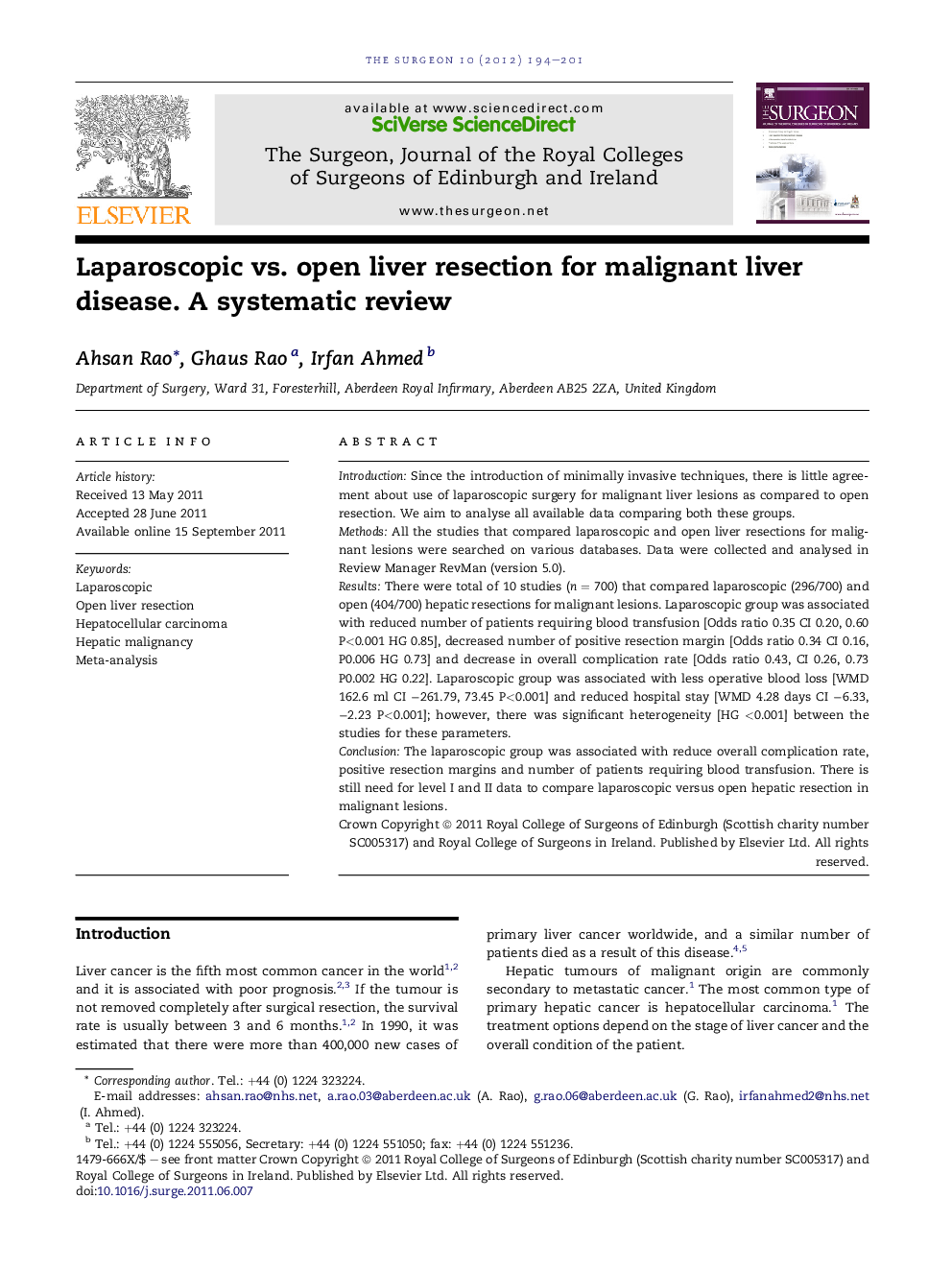| Article ID | Journal | Published Year | Pages | File Type |
|---|---|---|---|---|
| 3178803 | The Surgeon | 2012 | 8 Pages |
IntroductionSince the introduction of minimally invasive techniques, there is little agreement about use of laparoscopic surgery for malignant liver lesions as compared to open resection. We aim to analyse all available data comparing both these groups.MethodsAll the studies that compared laparoscopic and open liver resections for malignant lesions were searched on various databases. Data were collected and analysed in Review Manager RevMan (version 5.0).ResultsThere were total of 10 studies (n = 700) that compared laparoscopic (296/700) and open (404/700) hepatic resections for malignant lesions. Laparoscopic group was associated with reduced number of patients requiring blood transfusion [Odds ratio 0.35 CI 0.20, 0.60 P<0.001 HG 0.85], decreased number of positive resection margin [Odds ratio 0.34 CI 0.16, P0.006 HG 0.73] and decrease in overall complication rate [Odds ratio 0.43, CI 0.26, 0.73 P0.002 HG 0.22]. Laparoscopic group was associated with less operative blood loss [WMD 162.6 ml CI −261.79, 73.45 P<0.001] and reduced hospital stay [WMD 4.28 days CI −6.33, −2.23 P<0.001]; however, there was significant heterogeneity [HG <0.001] between the studies for these parameters.ConclusionThe laparoscopic group was associated with reduce overall complication rate, positive resection margins and number of patients requiring blood transfusion. There is still need for level I and II data to compare laparoscopic versus open hepatic resection in malignant lesions.
